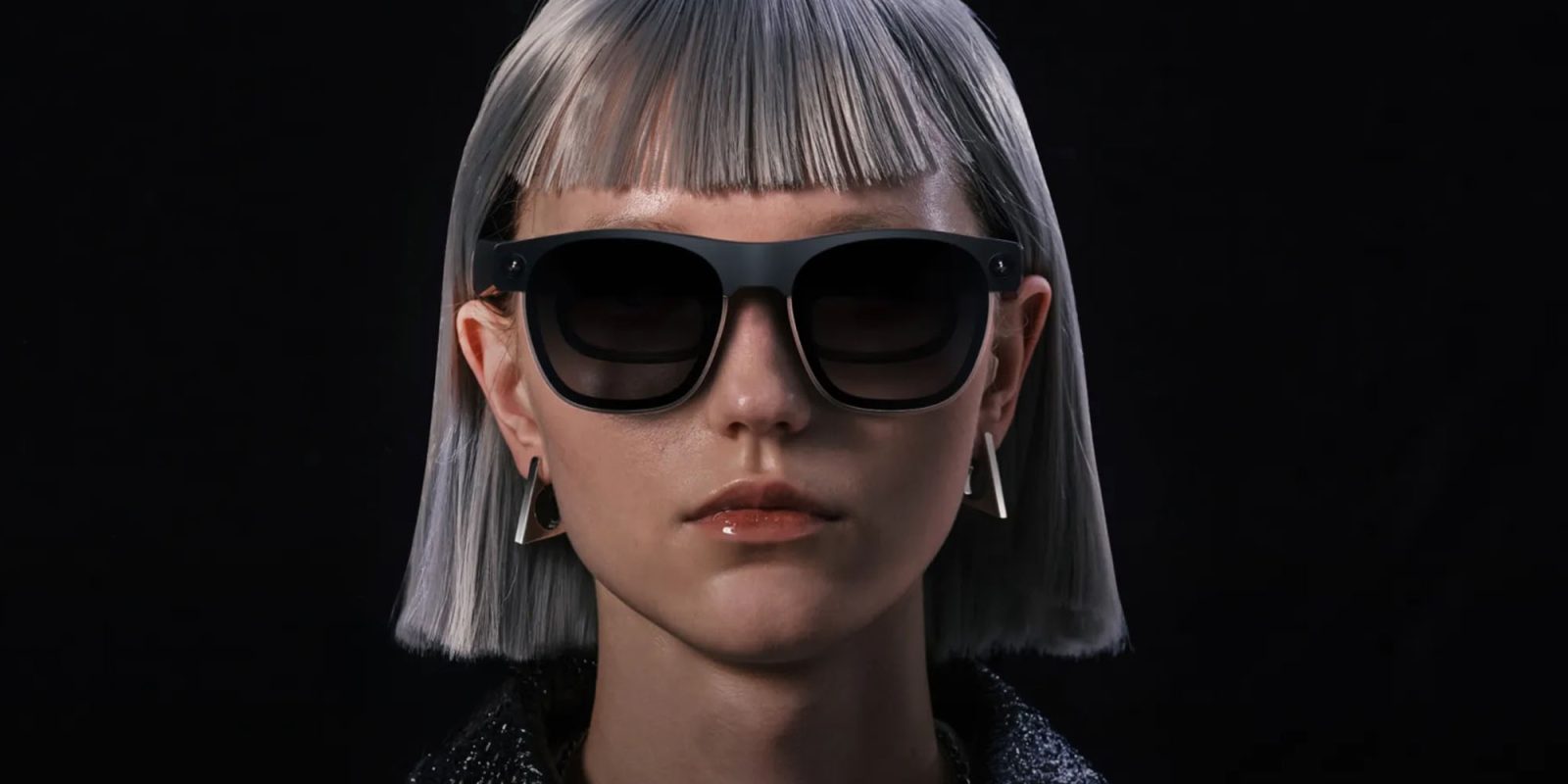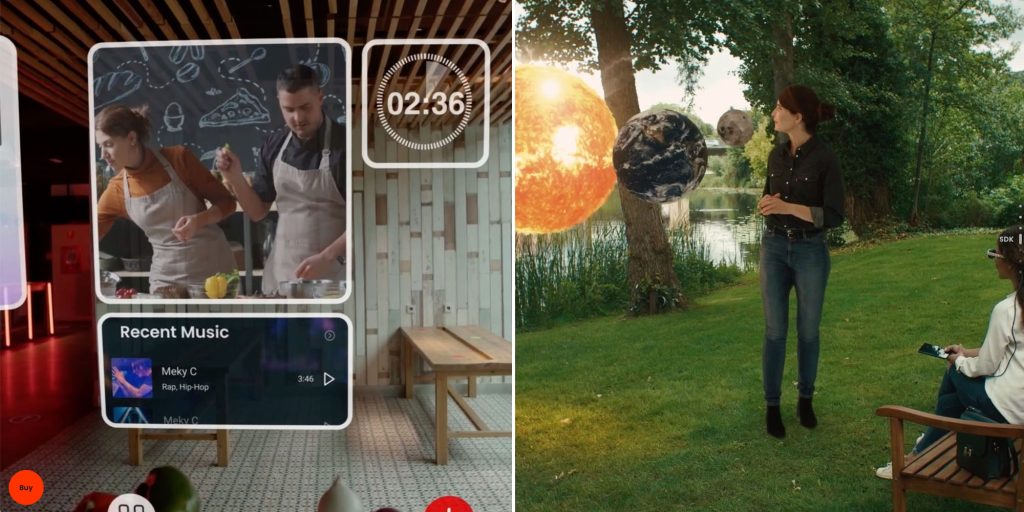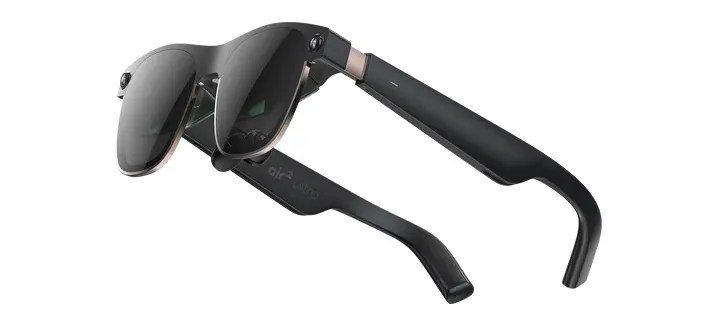
The first claimed Vision Pro competitor has been announced, in the form of the Xreal Air 2 Ultra. The device is powered by the shiny new spatial computing chip Qualcomm announced on Friday, and costs just a fifth of the price of Vision Pro.
Update: See the hands-on video at the bottom for a sense of what they are like to use …
Let’s start with what the company has to say about it:
XREAL (formerly ‘Nreal’) today unveiled XREAL Air 2 Ultra, the latest addition to its popular XREAL Air series AR glasses. Featuring six degrees of freedom (6DoF) via dual 3D environment sensors with computer vision capabilities, XREAL Air 2 Ultra is poised to invigorate the spatial computing developer community by providing an affordable alternative to competing devices, including Apple Vision Pro and Meta Quest 3. […]
XREAL Air 2 Ultra packs in tons of spatial computing tech in a smaller, more comfortable, and much more stylish form factor than what others are producing today. Unlike competing brands in this emerging space, we believe in making advanced wearable 6DoF glasses something you can wear all day long and that are accessible to all players in the XR development ecosystem.
It’s not a true Vision Pro competitor
Making something of a mockery of Qualcomm’s dig at the Vision Pro tethered battery pack, Xreal’s device can only be used while tethered to a computer, console, or Phone. It’s a spatial monitor, not a spatial computer.
As the name suggests, the new device is the latest iteration of the existing Xreal Air 2 and Air 2 Pro. As with its predecessors, it’s a pair of augmented reality glasses which simply serve as an external display to a Mac, PC, games console, or Android device.
Also somewhat amusing is Xreal’s talk about the fashion and style credentials of the device, given that its primary intended market is that well-known fashion-forward demographic: developers.
XREAL Air 2 Ultra is high in fashion and features a sleek new titanium ring frame as part of its iconic wayfarer-esque design, commanding attention from tech and fashion enthusiasts alike.

But it could still appeal to some Mac users
But while it’s not a true Vision Pro competitor, it could still appeal to some Mac users. If you’re primarily interested in using a headset as a 3D monitor for a Mac, then there are two big reasons to consider one instead of Vision Pro.
Top comment by BTS
I have used numerous AR type glasses from various manufacturers (Rokid, NReal, TCL, etc) and they all have one fundamental issue, comfort.
Rokid did a decent job of adding Myopic adjustments for users with glasses, but it stops at 6. I think for a more realistic and universal approach it should be up to 9.
Now what about the design concept, I think this is a great concept design, no batteries, lightweight for the most part (compared to other AR/VR Solutions) and the micro OLED screens are made by Sony (most of the AR frames out today in the past 2 years have Sony screens) which make them bright.
Using them as a replacement screen however falls short with the blurring at the edges. Content consumption is perfect though.
Should Apple go this route with the next version of Vision Lite? I totally think it is feasible and will be an excellent accessory for numerous things iPhone users do today. Apple Fitness or watching movies or even using it for walking maps. Not another smart device you need to keep up to date or even charged, just something that runs off the iPhone.
First, and most obviously, the price. At $699, the Air 2 Ultra is literally a fifth of the price of Vision Pro. It’s also cheaper than some large external monitors, making it a potentially viable alternative.

Second, it’s likely to be much more comfortable to wear for extended periods. While Vision Pro has a similar bulky form factor to the VR headsets which preceded it, the Air 2 Ultra is very much closer to the anticipated form factor of the Apple Glasses which are expected to follow at some stage.
Air 2 Ultra are premium and robust yet lightweight at only 80 grams and designed for optimal weight distribution with adjustable temples that offer three positions plus three nose pad options to ensure the best image alignment with absolute comfort.
I’m certainly intrigued by how the device compares with a widescreen monitor while travelling – which was my primary interest in Vision Pro – so I’ll be aiming to try them out when available in March, and will of course share my thoughts. But if you already know you want them, you can pre-order the Xreal Air 2 Ultra from the company’s developer website.
Update: CNET has a video of a brief hands-on experience with the glasses.
FTC: We use income earning auto affiliate links. More.



Comments